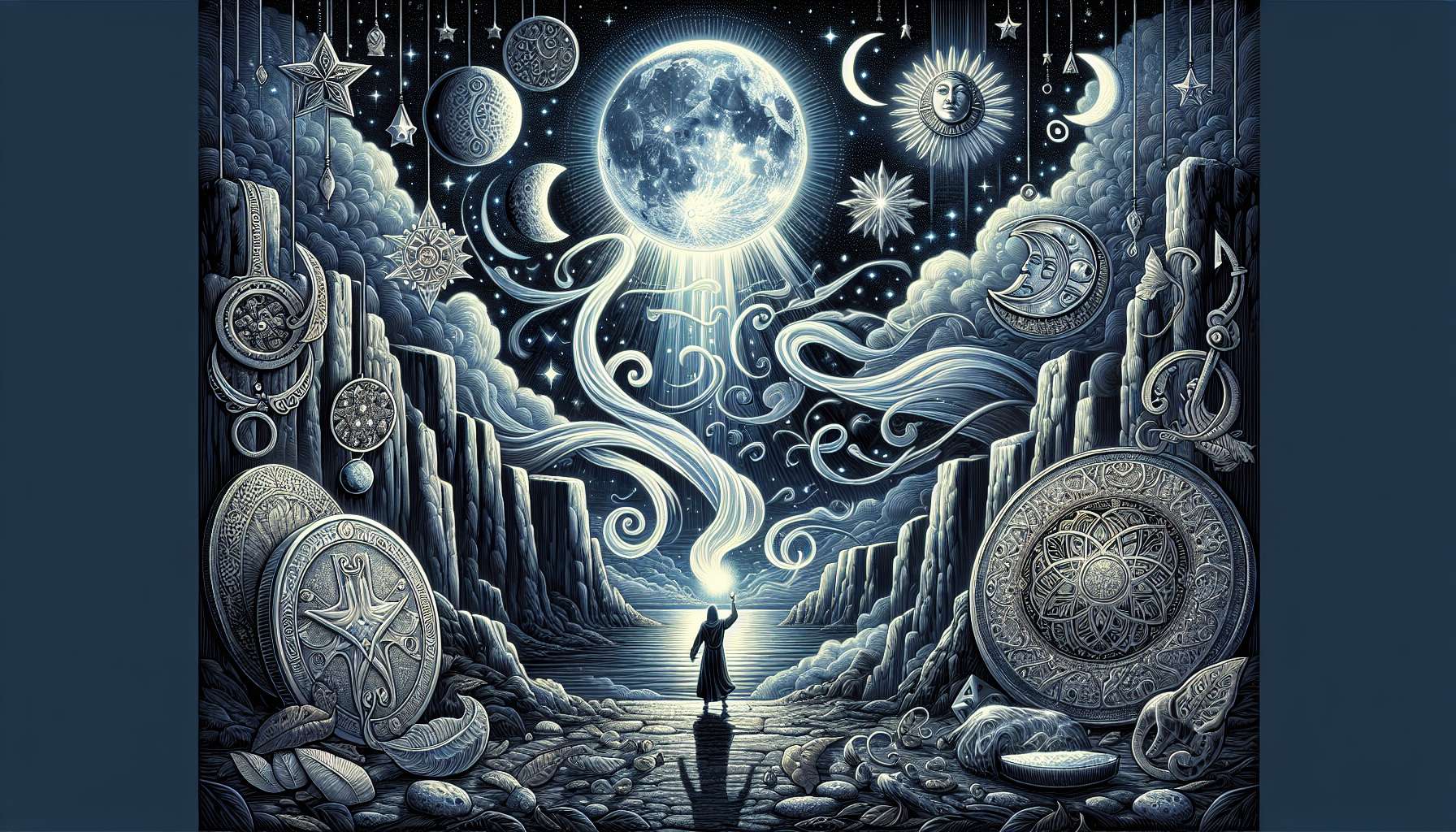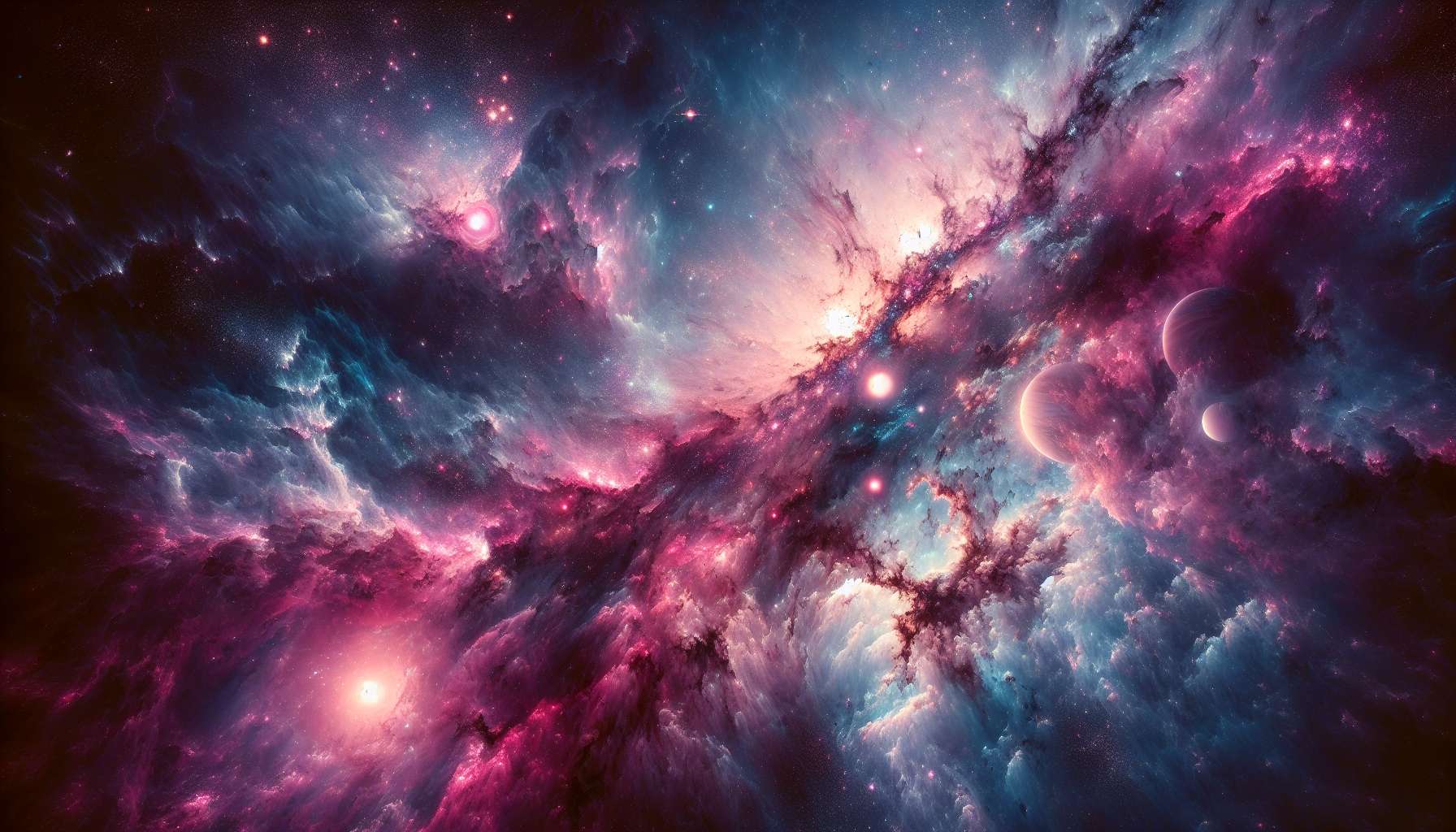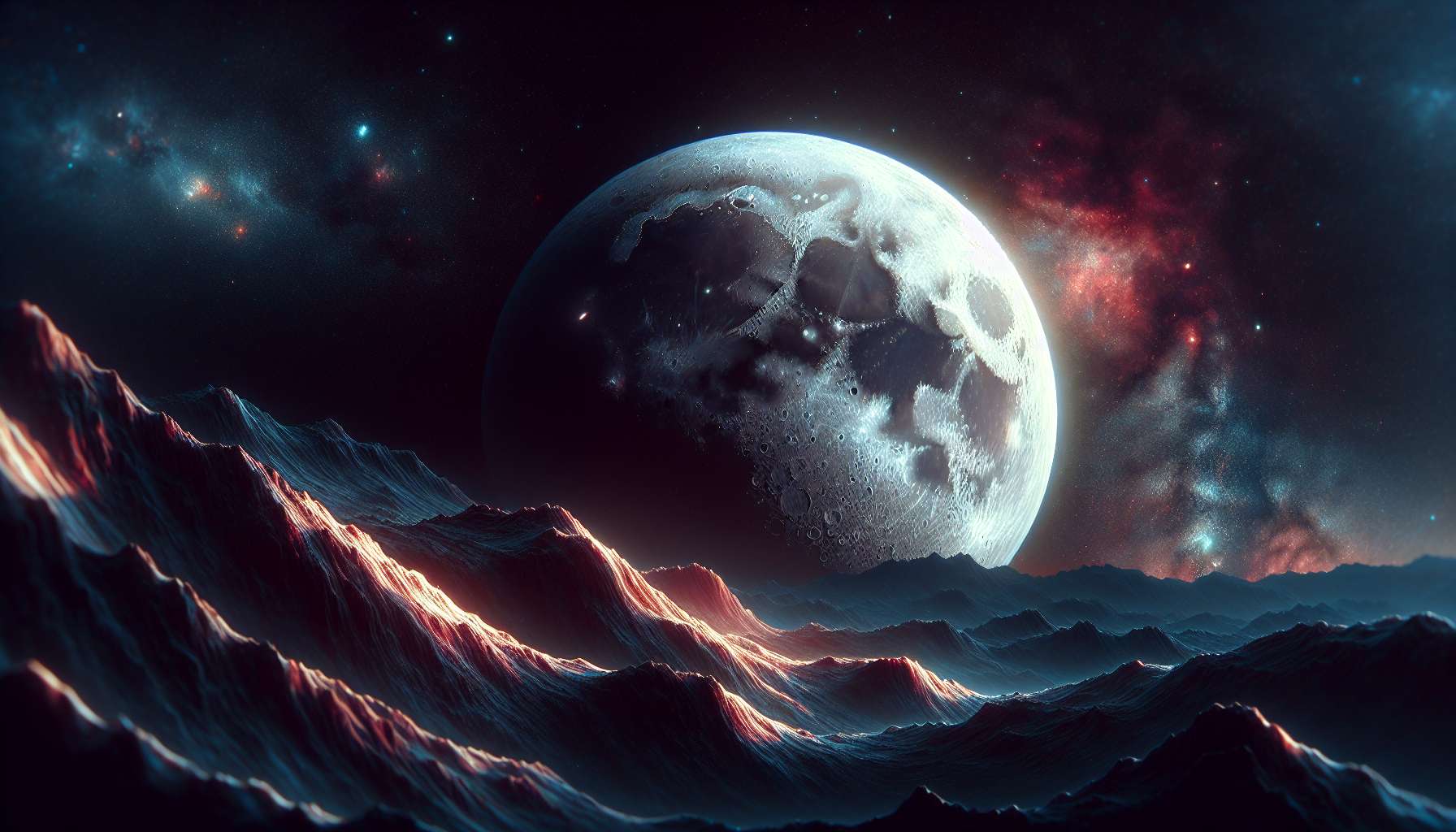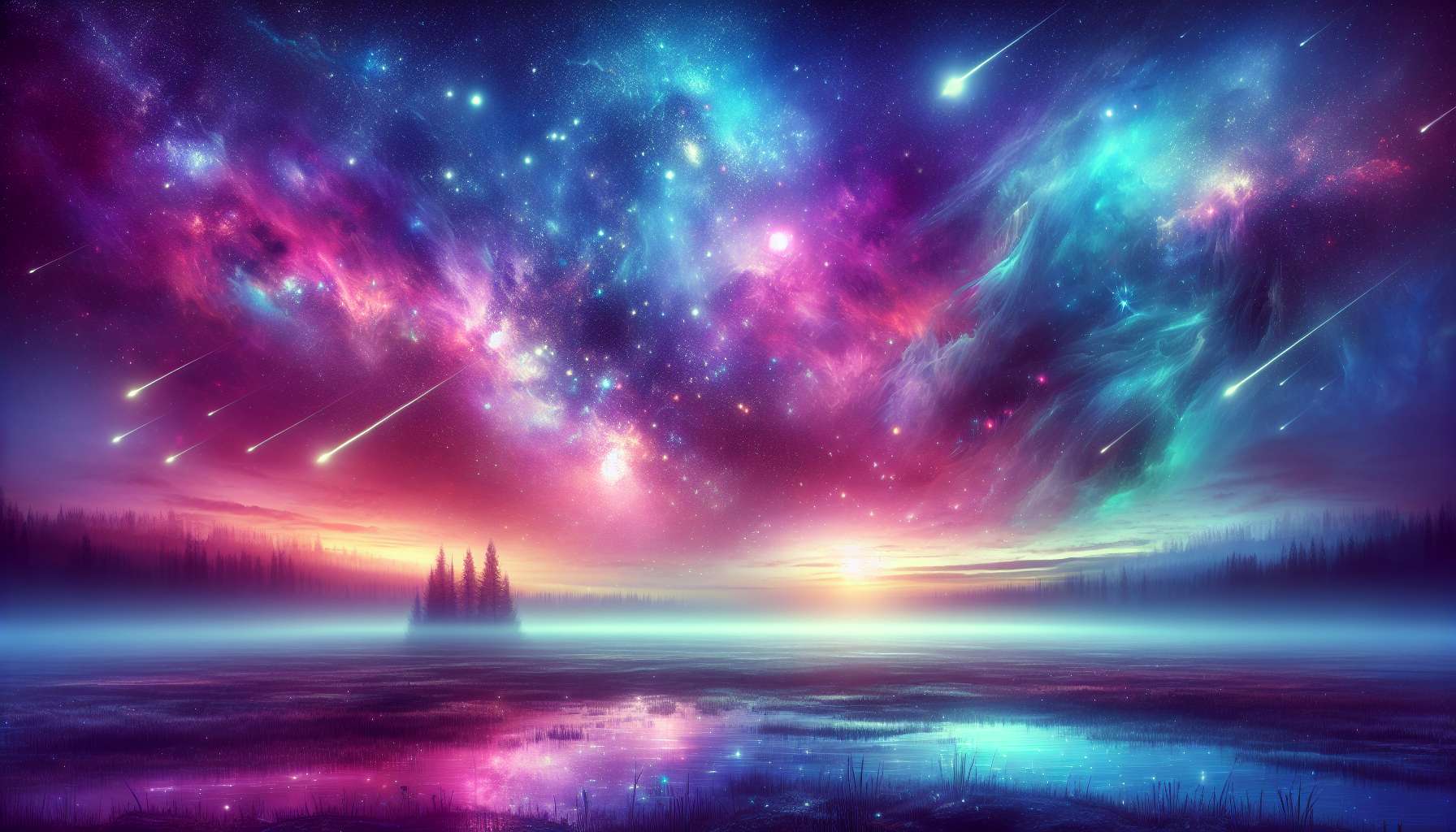Lunar Symbolism in Imagery: Exploring the Mystical Connection
When we gaze up at the night sky, the moon often captures our attention with its luminous presence. Beyond its astronomical significance, the moon has long been a source of inspiration for artists, poets, and mystics alike. In the realm of imagery, lunar symbolism holds a deep and multifaceted meaning that transcends cultural boundaries. From ancient civilizations to modern art, the moon’s symbolism continues to captivate and intrigue. Let’s delve into the enchanting world of lunar symbolism in imagery, exploring the rich tapestry of meanings woven into our collective consciousness.
The Lunar Symbolism in Ancient Cultures
Throughout history, the moon has held a central place in the mythologies and belief systems of various cultures around the world. In ancient Mesopotamia, the moon was associated with the goddess Sin, who was revered as the divine embodiment of lunar energies. The Egyptians, too, worshipped the moon as the god Thoth, who represented wisdom and magic. In Greek mythology, the moon was linked to the goddess Artemis, symbolizing femininity, fertility, and protection.
One of the most widespread lunar symbols is the crescent moon, which has been incorporated into religious iconography and art across different civilizations. The crescent moon is often associated with the cycle of life, death, and rebirth, reflecting the cyclical nature of the moon’s phases. Its shape has inspired artists to create intricate motifs and designs, symbolizing growth, change, and transformation.
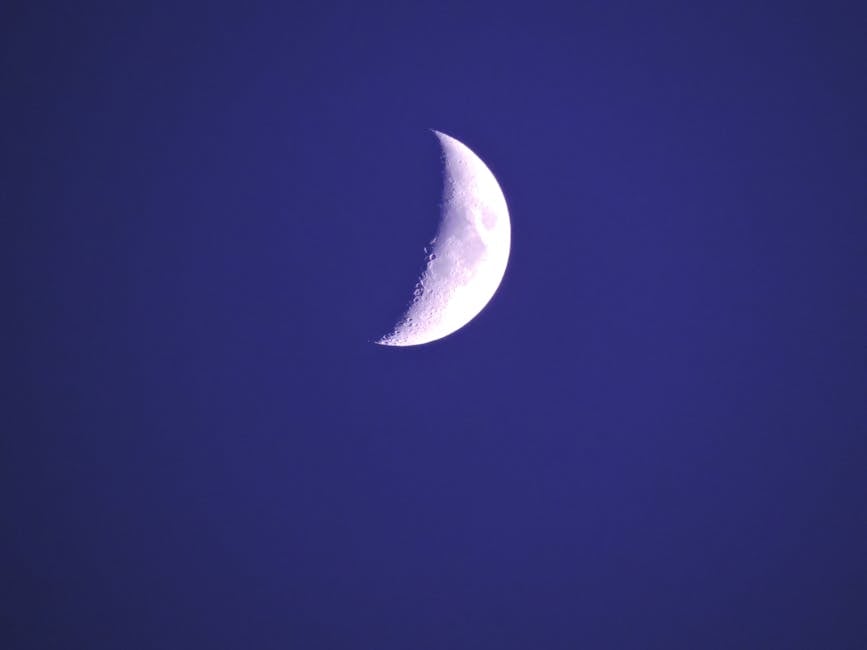
The Moon as a Symbol of Mystery and Emotion
In literature and art, the moon is frequently used as a symbol of mystery, intuition, and the unconscious mind. The moon’s soft, silvery light has a mesmerizing quality that evokes a sense of wonder and enchantment. Artists like Vincent van Gogh and Claude Monet often depicted the moon in their paintings, capturing its ethereal beauty and emotional resonance.
Moreover, the moon has been associated with the realm of dreams and the imagination. In psychology, the moon is linked to the unconscious mind and the hidden aspects of the self. The dreamlike quality of moonlit nights has inspired poets and writers to explore themes of romance, longing, and introspection, creating a timeless connection between the moon and human emotions.
The Lunar Symbolism in Contemporary Art
In the realm of contemporary art, the moon continues to be a powerful symbol that artists use to convey complex ideas and emotions. From surrealism to abstract expressionism, the moon has been a recurring motif in a wide range of artistic movements. Artists like Yayoi Kusama and Anselm Kiefer have explored the symbolism of the moon in their work, drawing on its mythic significance to create evocative and thought-provoking pieces.
One notable example is Ai Weiwei’s installation “Moon Chest,” which consists of a large wooden chest with a circular hole in the center, revealing a glowing orb inside. The piece invites viewers to contemplate the relationship between the tangible and the intangible, the seen and the unseen, echoing the moon’s enigmatic presence in our lives.

The Moon’s Symbolism in Tarot and Divination
In the realm of divination and esoteric practices, the moon holds a special significance as a symbol of intuition, reflection, and hidden truths. In tarot cards, the Moon card is associated with illusions, fears, and the subconscious mind. The card’s imagery often features a moon shining over a landscape of water and mountains, symbolizing the journey into the depths of the psyche.
Similarly, in astrology, the moon represents the emotional and instinctual aspects of the self. The phases of the moon are believed to influence human behavior and moods, with the full moon associated with heightened emotions and the new moon symbolizing new beginnings. Astrologers use the position of the moon in the natal chart to gain insights into a person’s emotional nature and inner world.
The Moon in Popular Culture and Symbolism
In popular culture, the moon has been a recurring symbol that is often imbued with magical and mystical qualities. From werewolves to witches, the moon is associated with supernatural beings and powers in folklore and fiction. Films like “Moonlight” and “La La Land” use the moon as a visual motif to convey themes of love, longing, and transformation.
Moreover, in music, the moon has inspired countless songs and lyrics that evoke its enchanting allure. Artists like Frank Sinatra and Cat Stevens have sung about moonlit nights and romantic escapades under the moon’s glow. The moon’s symbolic resonance in popular culture reflects its enduring appeal as a symbol of beauty, mystery, and emotional depth.
Expert Opinions on Lunar Symbolism
Renowned art historian and critic, Dr. Elizabeth Smith, emphasizes the pervasive influence of lunar symbolism in art and culture, stating, “The moon’s symbolism transcends time and space, connecting us to the primal forces of nature and the mysteries of the universe. Artists have long been drawn to the moon as a symbol of transformation, renewal, and the eternal cycle of life.”
Astrologer and tarot reader, Luna Diaz, adds, “In my practice, the moon plays a central role in understanding the subconscious mind and unlocking hidden truths. The moon’s phases reflect our emotional landscape, offering insights into our innermost desires and fears. By working with lunar symbolism, we can tap into our intuition and connect with the deeper currents of our psyche.”
Common Misconceptions About Lunar Symbolism
One common misconception about lunar symbolism is that it is limited to feminine qualities and associations. While the moon is often linked to femininity, intuition, and emotions, its symbolism is not exclusive to gender. The moon represents a balance of yin and yang energies, embodying both light and shadow, strength and vulnerability.
Another misconception is that lunar symbolism is purely mystical and esoteric, with no relevance to everyday life. In reality, the moon’s symbolism permeates our cultural consciousness in subtle ways, influencing art, literature, and popular culture. By exploring the deeper meanings of lunar symbolism, we can gain a deeper understanding of ourselves and our place in the universe.
Final Thoughts on Lunar Symbolism in Imagery
In conclusion, the moon’s symbolism in imagery is a rich and multifaceted tapestry that weaves together myth, art, psychology, and spirituality. The moon’s luminous presence has inspired artists, poets, and thinkers for centuries, inviting us to ponder the mysteries of the universe and the depths of our own souls. Whether as a symbol of transformation, intuition, or emotional depth, the moon continues to captivate and illuminate our imaginations, offering a glimpse into the eternal dance of light and shadow that shapes our lives.
To wrap things up, let us embrace the moon’s symbolism as a guiding light that leads us on a journey of self-discovery and spiritual awakening. May the moon’s gentle glow remind us of the interconnectedness of all things and the eternal cycle of life, death, and rebirth that unites us with the cosmos.

